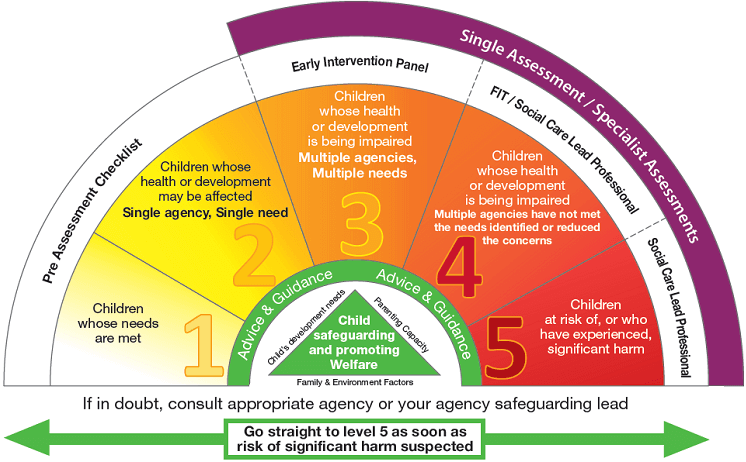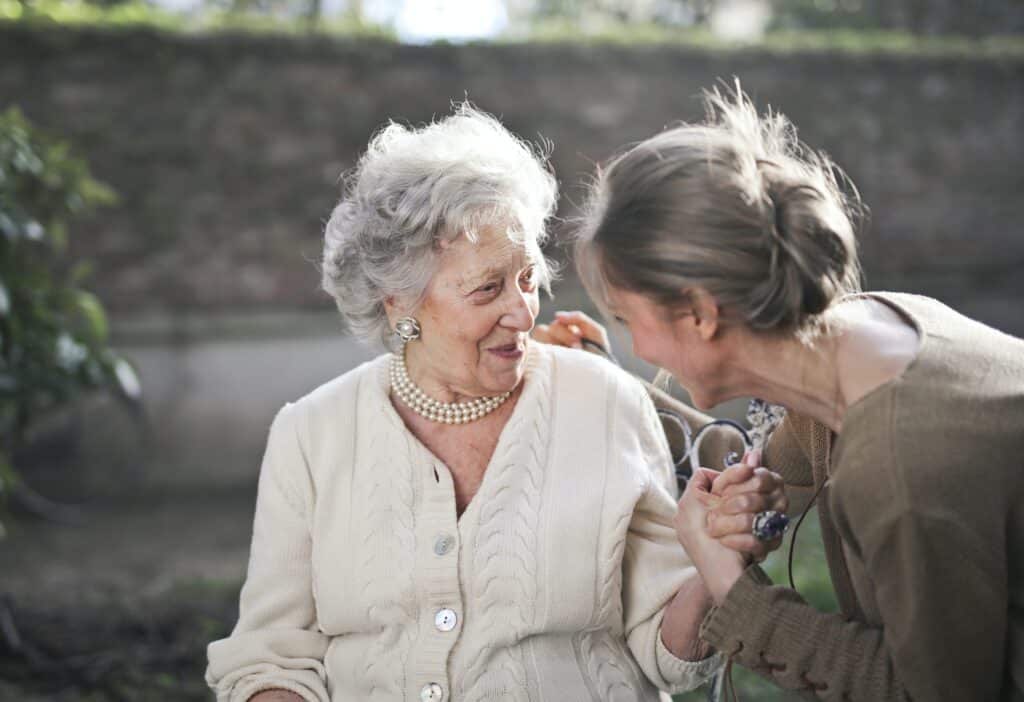Safeguarding Assessment Strategy for Care Workers: Ensuring Safety for Vulnerable Individuals and the Elderly
Safeguarding vulnerable individuals and the elderly means protecting the person’s safety and ensuring that they are free from abuse and any possibility of neglect. Everyone who works in a form of an adult social care setting has to acknowledge the responsibilities and standards to follow to ensure they carry out the appropriate safeguarding procedures.
This is extremely important in care settings, which is why a safeguarding assessment strategy can be beneficial for care workers who need to understand how their skills and knowledge can help to safeguard adults correctly.
In this blog, we take a look at how a safeguarding assessment strategy can help to ensure the safety of vulnerable individuals and the elderly including the main components of an effective safeguarding strategy and the steps you can follow to create one.
What is an effective safeguarding strategy for care workers?
An effective safeguarding strategy is a plan put in place to help protect vulnerable adults in your care. This means protecting their rights to live in safety, free from abuse and neglect.
This also means ensuring that people and organisations work together to prevent any risk of abuse or neglect or to stop them from occurring.
Another key part of this is ensuring the protection of everyone’s well-being. This includes the well-being of the carers and healthcare professionals who are looking after the vulnerable individuals.
It also involves considering their views, wishes, beliefs and feelings in a planned safeguarding strategy.

Image by: Lancashire Safeguarding Organisation
The main components of an effective safeguarding strategy
To create and develop an effective safeguarding strategy, there are a few key components to bear in mind. These include:
1. Clear policies and procedures
Every care setting should have clear policies and procedures in place to help safeguard the adults in their care. This includes a clear procedure on how you respond to concerns about someone’s welfare, how you store welfare records and how you carry out safeguarding training amongst many other things.
Every aspect of your safeguarding needs a clear policy or procedure for all members of staff to follow so every person in your care gets the same treatment and same protection from safeguarding risks.
2. Training and education for staff
Every member of staff who works in a care setting should receive the same level and standard of training and education.
This involves breaking down the courses of action to take when a safeguarding issue is brought up. It also includes knowing the correct policies and procedures in the care setting and ensuring that all staff members have the right skills and knowledge to report abuse or neglect.
Everyone needs to have the same level of training so any staff member can deal with a safeguarding issue.
3. Information gathering
As well as having the correct policies and procedures in place, all staff members should also know how to gather information needed for safeguarding concerns. This includes how to ask for or find information needed appropriately.
Examples of information that you might need include:
- Name/address
- Age
- Gender
- Details of any risks/threats/concerns
- Take immediate actions to help/support them
- The desired outcomes for the adult at risk
- The type of abuse (if any) and details of the events that happened
4. Risk assessment
One of the most important parts of a safeguarding assessment strategy is having the right risk assessment in place. A risk assessment involves a thorough evaluation of the care setting you work in along with identifying any potential risks or threats to the people in your care.
With the identified risks, a risk assessment also includes the precautions you need to take to prevent these risks from happening. It acts as a way for controlling the risks as you record your findings from the assessment and review your controls.
5. Collaboration and information sharing
As part of an effective safeguarding strategy, care settings also need to think about collaboration and information sharing to prevent any safeguarding concerns. This is because safeguarding often involves sensitive pieces of information that can directly affect the welfare of staff and patients.
To collaborate appropriately, there are certain rules to follow when sharing sensitive information with other staff members or authorities. This includes deciding whether the information you’re thinking of sharing is necessary, relevant, proportionate to the situation, accurate, secure and adequate.
6. Reporting and recording
Once you have found out about a safeguarding concern, as part of an effective safeguarding strategy it’s crucial to report and record the information correctly. When you record anything regarding a safeguarding concern, you have to be impartial.
This means you should write down only the information that has been presented to you or what you have seen, not how you feel about the situation. You also need to consider any evidence that might be available or whether you need to gather any specifically.
Up-to-date records help to identify concerns early and help you notice any patterns of concern. Reporting concerns means presenting only the relevant facts and evidence to the appropriate authorities.
7. Support and intervention
After reporting and recording a safeguarding concern, having the right support and intervention in place is equally as important.
This includes acknowledging the person who raised the concern and having the right support in place for the person at risk and the staff after.
The right intervention also needs to be in place to protect the safety of those who raised the concern and for the person who might be at risk.
8. Continuous monitoring and review
Whoever is the lead professional in the care setting should then continuously monitor and review their safeguarding assessment strategy as well as their records and risk assessment.
If you find a gap in the risk assessment, you will need to review it to ensure that the risk is prevented from happening again.
9. Taking an holistic approach
An overarching theme of safeguarding is the ability to take a holistic approach. This means reviewing and evaluating every aspect of the safeguarding concern and not just looking at the surface level of it.
Considering contexts, background factors and how to work with and encourage the person at risk are all parts of taking a holistic approach.
This also means taking a holistic approach when cooperating with the relevant authorities, support agencies and family members where necessary.
Your knowledge can save lives.
Embark on our Train the Trainer Safeguarding Course to become a skilled instructor in safeguarding. Equip yourself to educate and empower others in protecting the vulnerable. Reach out to our Course Advisors at enquiries@caringforcare.co.uk or call 01782 563333 to initiate your journey as a safeguarding trainer.
Why it’s important to involve the person at risk in the assessment process
When creating risk assessments as part of an effective safeguarding assessment strategy, it’s important to actively involve the person or people who are at risk.
When developing risk assessments for individuals or for care settings as a whole, getting the people at risk involved helps them to take control over their own lives by helping to make informed decisions about any potential risks they may face.
This also helps to determine how the risks can be managed with the person’s complete consent.
Why you need to work with other agencies to ensure the person at risk receives the support they need
When a person comes to you as a carer or another member of staff approaches you about another patient, it’s important to ensure the person at risk receives the support they need.
This often means collaborating and working with other agencies, for example, sharing the right information, identifying the person’s needs, and sharing any information promptly to ensure there’s no delay in people accessing the support they need.

Women were more likely than men to be the subject of a safeguarding concern (63% vs 37%). | Year Report: 2022-2023
Steps in developing a safeguarding assessment strategy for care workers
Here are a few steps to follow to develop an effective safeguarding assessment strategy for care workers:
1. Assessing organisation needs and resources
The first step in developing a safeguarding assessment strategy is assessing the needs and resources of your organisation.
This means establishing any resources you need to set up a strategy such as making sure you have methods of measuring your care setting’s safeguarding effectiveness, ensuring you have the right framework set up and ensuring you have the right resources to pass the Care Quality Commission’s safeguarding’s tests according to The Care Act of 2014.
2. Setting clear goals and objectives
Before you jump straight into setting up a safeguarding strategy, it’s important to first set up clear goals and objectives for your strategy.
This means setting up what you want to get out of your strategy. It includes exactly how you plan on reducing the risk of abuse and neglect while also balancing allowing those in your care to make their own choices on how they want to live and be supported.
3. Designing assessment tools and methods
To measure the effectiveness of your safeguarding strategies, you also need to design your assessment tools and methods.
The standard tool that most care settings use is the Safeguarding Adults Risk Assessment and Threshold Tool. It is used as soon as a concern is raised and throughout any decision-making processes and enquiries to relevant agencies and authorities.
These assessment tools and methods help evaluate if the resident needs extra care and support. They also determine if they are experiencing abuse and neglect. Additionally, they assess if their needs make them unable to protect themselves from abuse or neglect.
4. Implementing the strategy
After this, you then need to implement your safeguarding strategy. Once set up, the first step of implementing it is to train and educate all staff members on how to deal with safeguarding concerns.
This could include in-depth training sessions with presentations showing your workplace’s safeguarding strategy. This could also mean informing residents in your care setting about the individuals they can approach for safeguarding support. It may also involve providing them with information about the care procedure they should follow.
5. Monitoring and evaluation
Once implemented, the final step to setting up an effective safeguarding strategy is to monitor and evaluate the strategy itself.
This means you should regularly:
- monitor its effectiveness,
- keep risk assessments up to date, and
- evaluate the outcomes of all safeguarding concerns brought to your attention.

In 2022-2023, there were an estimated 541,535 concerns of abuse raised in England, an increase of 9% on the previous year.
What are the 6 principles of Care Act 2014?
The Care Act 2014 sets out six key principles that must be followed when providing care and support to adults. The principles are:
- Promoting wellbeing: The Act aims to promote the wellbeing of individuals and improve their quality of life.
2. Preventing and reducing needs: It emphasizes the importance of preventing and reducing care and support needs through early intervention and support services.
3. Integration of care and support: The Act promotes integrated care and support, encouraging collaboration between health, social care, and other relevant services.
4. Person-centered care and support: It emphasizes the importance of providing care and support that is tailored to the individual’s preferences, needs, and goals.
5. Safeguarding and protection: The Act prioritizes the protection of individuals from abuse or neglect and promotes robust safeguarding measures.
6. Taking a holistic approach: It recognizes the importance of considering a person’s circumstances as a whole, including their physical, mental, and emotional wellbeing, as well as their wider social and environmental factors.
These principles underpin the Care Act and guide the provision of care and support for individuals in England. Another way of stating the 6 principles of the Care Act 2014 is given below in the image:


The majority of children (61%) who were the subject of a child protection plan were aged 10 or under. | Year Report: 2022-2023.
See Full Course Content:
Start Your Safeguarding Journey Today
What are the 6 Principles of Safeguarding?
Safeguarding vulnerable groups from abuse, neglect or harm depends on robust policies, procedures and practices driven by core principles.
The 6 principles listed in the Care Act 2014 are similar to the 6 key safeguarding principles. The only slight difference is where in the Care Act 2014, the principle of protection in phrased as “safeguarding people from abuse and neglect.”
The following 6 principles serve as the foundation for safeguarding activities across sectors like healthcare, social services, and education.
1. Empowerment
Those at risk should be empowered to make their own choices and provide informed consent regarding interventions or protective measures.
Safeguarding should aim to preserve autonomy wherever possible rather than imposing paternalistic decisions. Caregivers must respect rights while balancing safety.
2. Prevention
Safeguarding emphasizes proactive prevention of harm rather than just reactionary responses. Organizations have a duty to assess risks continually and take action to minimize the likelihood of abuse or neglect occurring.
Prevention is key.
3. Proportionality
Any safeguarding actions taken must be measured and proportionate to the assessed risks and seriousness of the concerns raised.
Intrusive interventions should be justified by demonstrable risks of irreparable harm, otherwise proportional responses will apply.
4. Protection
While empowering self-determination, those at heightened risk still require advocacy.
Collaborative protection services must robustly represent and support those unable to fully safeguard themselves from exploitation or mistreatment.
5. Partnership
Multi-agency cooperation should implement safeguarding.
This includes information sharing, collaborative case planning, coordinated service delivery, integrated systems, community engagement and collective accountability.
6. Accountability
All individuals and agencies involved in safeguarding processes must act transparently and be answerable for their responsibilities.
Deficiencies must be addressed through rigorous quality governance, oversight and improvement measures.
These principles aim to keep those at risk at the center of decision-making while deploying protective measures necessary to their level of need and vulnerabilities. With sound guiding principles, safeguarding programs uphold dignity and quality of life even amid care dependencies.
Your knowledge can have a positive impact.
Discover our selection of safeguarding courses designed to help you learn how to protect those in need. Take a look at our list of safeguarding courses now. Click Here Now.
Safeguarding Assessment Strategy time frame
The time frame for a safeguarding assessment strategy can vary depending on the individual case and the specific circumstances.
However, in general, a safeguarding assessment should be completed within a reasonable timeframe.
This consideration involves gathering all relevant information and ensuring the safety of the person being assessed.
In England, the Care Quality Commission (CQC) recommends that a safeguarding assessment should be completed within 48 hours of a safeguarding concern being raised.
However, the CQC also acknowledges that there may be cases where this is not possible, such as if the person being assessed is unable to communicate or if there are complex legal issues involved.
In Scotland, the Scottish Government’s National Safeguarding Adults Framework (NSAF) recommends completing a safeguarding assessment within 72 hours.
The NSAF also acknowledges that there may be cases where completing the assessment within 72 hours is not possible. Factors such as the person’s inability to communicate or the presence of complex legal issues could contribute to this.
Professionals ultimately decide when to complete a safeguarding assessment, and they should make this decision on a case-by-case basis.
The goal is to ensure the safety of the person being assessed and meet their needs, which may necessitate a more rapid assessment in certain cases compared to others.

Girls are more likely than boys to be the subject of a child protection plan (55% vs 45%). | Report 2022-2023
What are the recommended time frames for taking action in the safeguarding?
Here are some key recommended timeframes for taking action in response to safeguarding concerns:
- Immediate danger – Take emergency action straight away if the person is at immediate risk of harm or a crime is in progress. Contact emergency services.
- Same day – Report any suspected abuse or unsafe practices the same day they are discovered or disclosed. Do not delay.
- 24 hours – Make a referral to local authority adult or children’s services within 24 hours of a concern being raised.
- 48 hours – Adult services should make face-to-face contact with the individual within 48 hours of a safeguarding referral.
- 5 working days – Children’s services should complete initial assessments within 5 working days of the referral date.
- 7 working days – Adult services should complete enquiries and decide on next actions within 7 working days. More complex cases may take longer.
- 29 working days – Children’s services should complete assessments within 29 working days from the point of referral.
The key is urgency – delays in reporting or responding can leave vulnerable individuals exposed to avoidable harm.
Timely action helps mitigate risks and enact protection plans early.
Factors Affecting Safeguarding Assessment Time Frame
Here are some factors that may affect the time frame for a safeguarding assessment:
- The nature of the safeguarding concern
- The availability of information
- The need to gather evidence
- The need to consult with others
- The need to ensure the safety of the person being assessed
It is important to note that a safeguarding assessment is not a one-time event. It is an ongoing process that should be reviewed and updated as needed. The time frame for a safeguarding assessment may also vary depending on the outcome of the assessment. If the assessment finds that the person being assessed is at risk of harm, then a more immediate response may be required.
If you are concerned about the safety of an adult, you should report your concerns to the relevant authorities.
In England, you can report your concerns to the local authority or the Care Quality Commission.
In Scotland, you can report your concerns to the local authority or the Scottish Government’s Social Care and Social Work Improvement Scotland.

The majority of safeguarding concerns (78%) were raised about adults aged 65 and over.
Photo Credit: From Pexel.
Challenges and considerations for developing and implementing a safeguarding assessment strategy for care workers
Alongside setting up a safeguarding strategy for care workers, you also need to think about the challenges and considerations of developing one. Some of these include:
1. Ethical considerations
Ethical considerations are one of the most important challenges of establishing an effective safeguarding assessment strategy. This means you should only take prompt action if a resident’s safety, dignity, or comfort is in some way compromised.
You also need to protect everyone’s right to be safe and free from abuse, harm or neglect, including care staff.
Alongside this, you also need to make sure only necessary and accurate information is being passed on to the relevant agencies and authorities.
2. Confidentiality and data protection
Along with ethical considerations, confidentiality and the data protection of residents and care staff is also crucially important.
Whenever a safeguarding concern is raised, your safeguarding assessment strategy should enable you to pass on only the necessary information to proceed.
This is to ensure the confidentiality of the residents and to protect their details.
3. Overcoming resistance to change
Safeguarding can be an extremely difficult topic for some people to handle, both staff members and residents alike. Therefore, it’s important to approach these conversations with an open mind.
Some people may be resistant to any changes made to safeguarding strategies in the workplace. So it’s important as part of your safeguarding assessment strategy to think of ways to overcome any resistance to change.
Hold safeguarding meetings with staff, residents, and family members to ensure you keep everyone informed of any changes to safeguarding strategies.
4. Continuous improvement and adaptation
The final consideration for your safeguarding assessment strategy is to continuously improve and adapt it to every safeguarding situation brought to you.
In every situation, you should reflect on what you could do better or what was done well. Then, make any necessary changes or adjustments.
Examples of successful safeguarding assessment strategies for care workers
Examples of successful safeguarding assessment strategies could include:
- Risk assessments
- Care plans
- Observations
- Financial transactions
- Complaints procedures
- Medication Prescriptions
- Rosters and logs for safeguarding
Just before you leave.
Discover our selection of safeguarding courses designed to help you learn how to protect those in need. Take a look at our list of safeguarding courses now. CHECK ALL SAFEGUARDING COURSES NOW!
Conclusion
In conclusion, the effectiveness of a safeguarding assessment strategy is crucial to care workers in any care setting.
This includes considering all relevant challenges and considerations for your workplace. It involves thinking about all components of developing a creative strategy, risk assessments, policies and procedures, and the assessment tools and methods needed.
To learn more about effective safeguarding assessment strategies, reach out to a member of our team at 01782 563333. Therefore, get involved in your organization’s efforts to protect vulnerable adults in care settings.
Let us Help you
We’ll help you find the right course for your needs. Tell us a little bit about your situation and what you would like to achieve.
We’ll get back to you within one working day.
